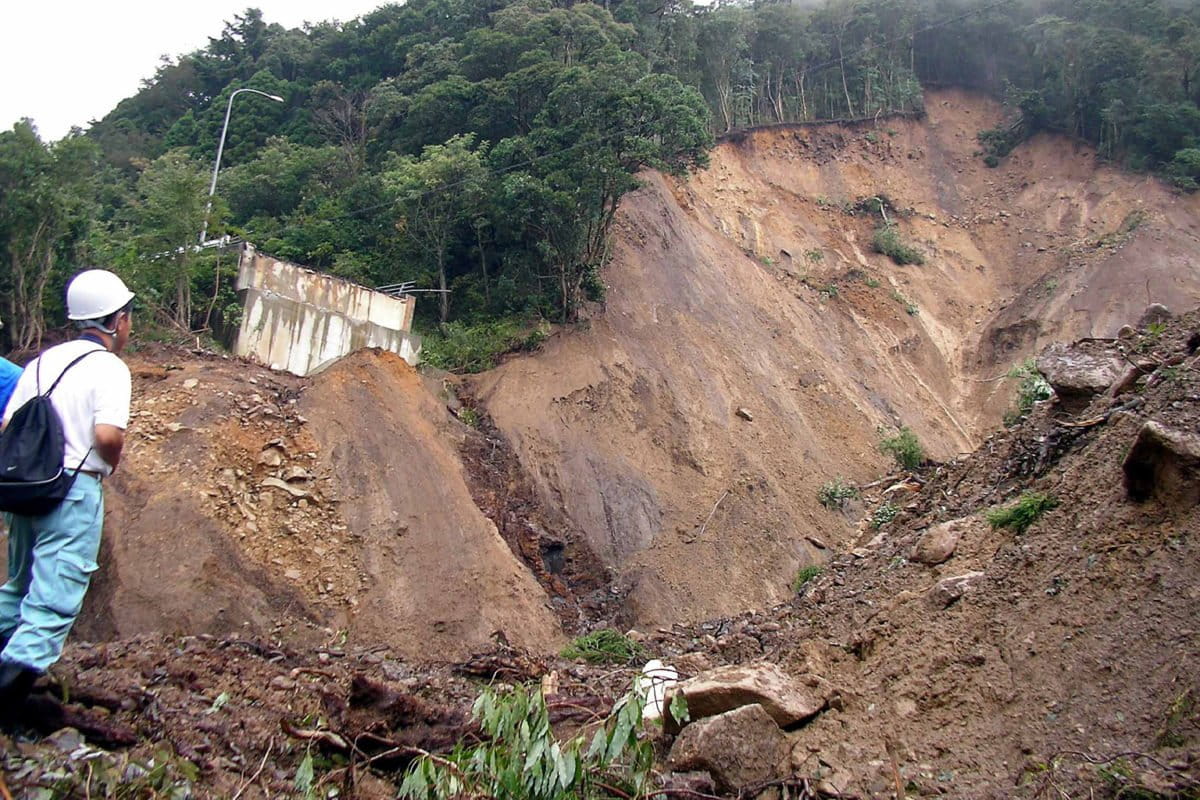- In disaster-prone Japan, torrential rains exacerbated by the climate crisis have caused serious flooding and landslides in recent years, including in the country’s many forests.
- While acknowledging the limits of forests’ ability to prevent landslides occurring in the bedrock, Japan’s Forestry Agency is implementing both forest improvement activities and erosion control facility construction to help mitigate future landslide disasters.
- Japan’s monoculture plantation forests, which represent 40% of the nation’s total forest cover, are seen by some experts and civil society members as insufficient to prevent mountain disasters. However, other experts say that a much wider range of geological and environmental factors, not just tree species, determine a forest’s disaster mitigation ability.
- Along Japan’s Pacific coast, others are using trees planted on raised embankments as an as-yet-untested countermeasure against future tsunamis, a type of disaster experts say can also be exacerbated by sea level rise due to climate change.
Japan is well-known for its natural disasters, from earthquakes and tsunamis (think Fukushima), to typhoons. With most of the country’s weather disasters now being exacerbated by the climate crisis, torrential rains and the resulting flooding and landslides have become some of Japan’s most frequent and destructive disasters in the past decade.
Instances of torrential rain — at least 50 millimeters (2 inches) in one hour — have increased by 40% over the past 30-odd years, according to government statistics. With roughly 80% of Japan’s landmass covered in mountains and hills, these disasters menace populated areas nestled at their feet.
In 2018, for example, flash floods and landslides triggered by record rains in western Japan resulted in more than 200 fatalities and were a major factor in Germanwatch, an NGO, naming Japan as the country sustaining the most damage from extreme weather events that year.
Japan is also 66% forested — which hints at a potential way of curbing future landslide damages.
As the climate crisis intensifies, organizations and individuals around the world have turned to forests as a means of lessening the impacts of climate disaster: a nature-based solution that can work if applied scientifically. The U.N. Food and Agriculture Organization notes that restoring damaged forest ecosystems and increasing forest cover “can play a crucial role in the mitigation of … disasters, the frequency of which could increase in the face of climate change.”

In Japan, both public and private organizations are working to improve forest health to diminish such disasters — although their methods and philosophies can differ substantially.
The nation’s Forestry Agency, for example, has used landslide site surveys to identify “deep collapse” landslides — those occurring in bedrock (as opposed to those due to surface soil slippage) — as a common characteristic of many recent landslides caused by torrential rains. Because these deep collapses often occur beyond the reach of tree roots, the Forestry Agency is promoting the construction of hillside dams and other erosion-control infrastructure, as well as diligent upslope forest maintenance, to protect downslope people and property.
Another approach to mitigating extreme precipitation events is being applied by a number of private organizations, including nonprofits, foundations and their corporate supporters. This approach follows the teachings of the late forest ecologist Akira Miyawaki, who posited that conifers (which he claimed tend not to be deep-rooted) are less fit to prevent landslides than broadleaf species.
Monoculture conifer plantations currently comprise about 40% of Japan’s forests, which, according to this theory, would make them less fit for preventing landslides. Today, Miyawaki-method broadleaf forests are being planted along Japan’s coast to mitigate future tsunamis, although their efficacy is as yet untested.
Some experts caution against generalizations based on tree type. Understanding a forest’s climate disaster mitigation potential, they say, requires an analysis of multiple factors, including its history of human management and root system development, as well as an area’s steepness, soil quality, and bedrock type.
Still, trees hold promise and could play a role in curbing climate change-caused damages, with Japan potentially leading the way in early experiments to determine how best to implement this forest nature-based climate solution.


Addressing a new type of mountain disaster
On July 5 and 6, 2017, torrential rains caused flooding and landslides in northern Kyushu, the westernmost of Japan’s four major islands, claiming 37 lives and causing 35 billion yen (about $235 million) in damage. More than 1,000 landslides occurred in forests, turning stands of trees into deadly battering rams, sweeping away all in their path.
Following the disaster, Japan’s Forestry Agency set up a team to assess its causes and help prevent similar calamities.
Their November 2017 report noted that the majority of the Kyushu landslides occurred within bedrock at a depth of 3 meters (10 feet) or more below the surface, but that most roots at the disaster site didn’t extend deeper than 2-3 m (6.5-10 ft) into the soil. The report also identified the tree species at the site primarily as Japanese cedar and Japanese cypress — among the straight-growing conifer species most commonly used in the country’s plantation forests.
Since then, landslide disasters in Japan caused by very heavy rains have become an annual occurrence, with an average of 2,400 landslides per year in the period from 2017 to 2021, according to a 2022 Forestry Agency report. Deep collapse was identified as a common cause across many of the disasters, and its occurrence is increasing compared with the past, according to a 2021 report on the same topic.
In response, the Forestry Agency implemented more targeted deployment of its chisan method for girding mountain forests against disaster. Chisan, which literally translates to “fix the mountain,” encompasses both tree-related work — such as reforestation, thinning to encourage root growth, and designation of stands as “protection forests” — supported by the construction of erosion-control facilities — such as dams, terracing, and wells.
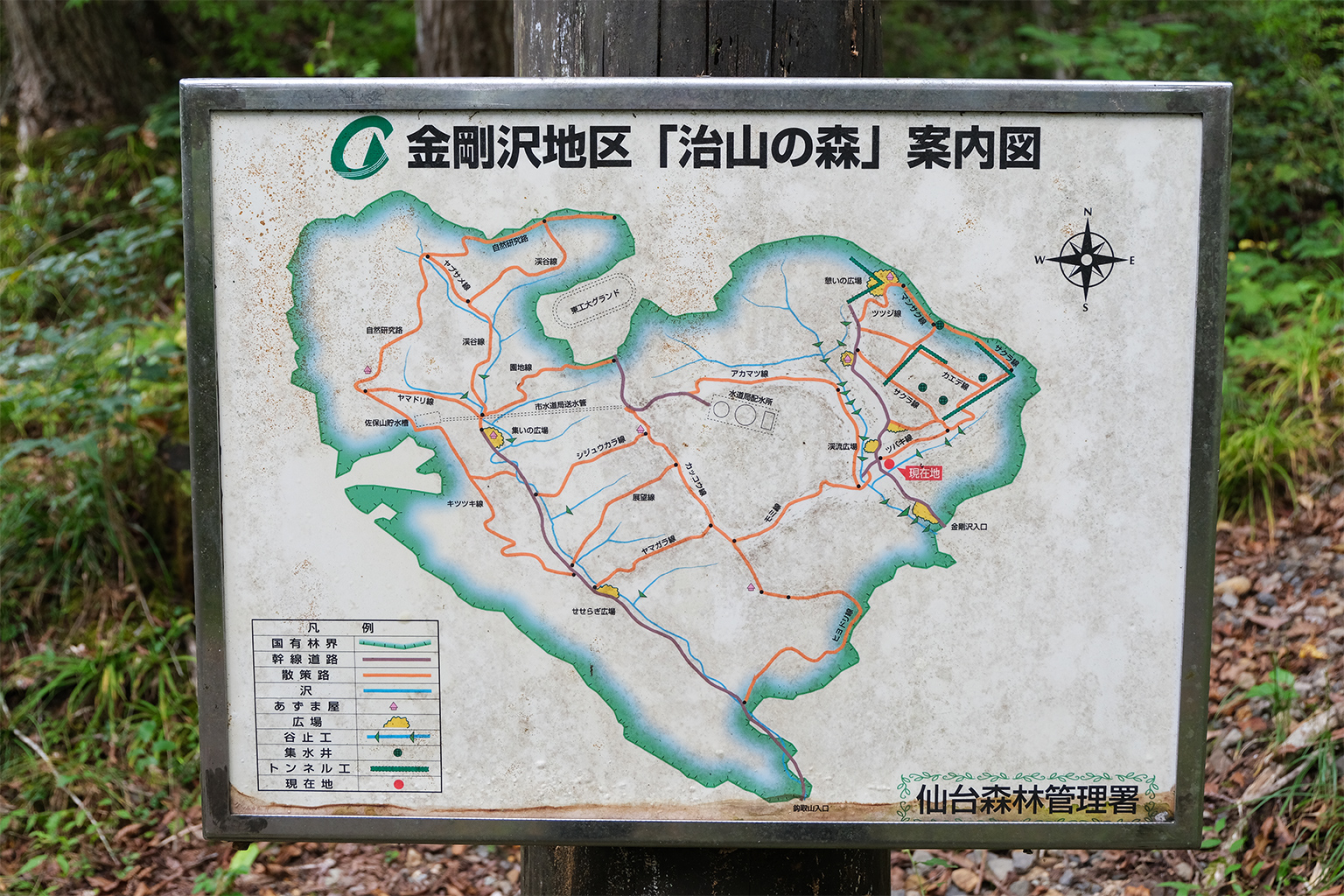
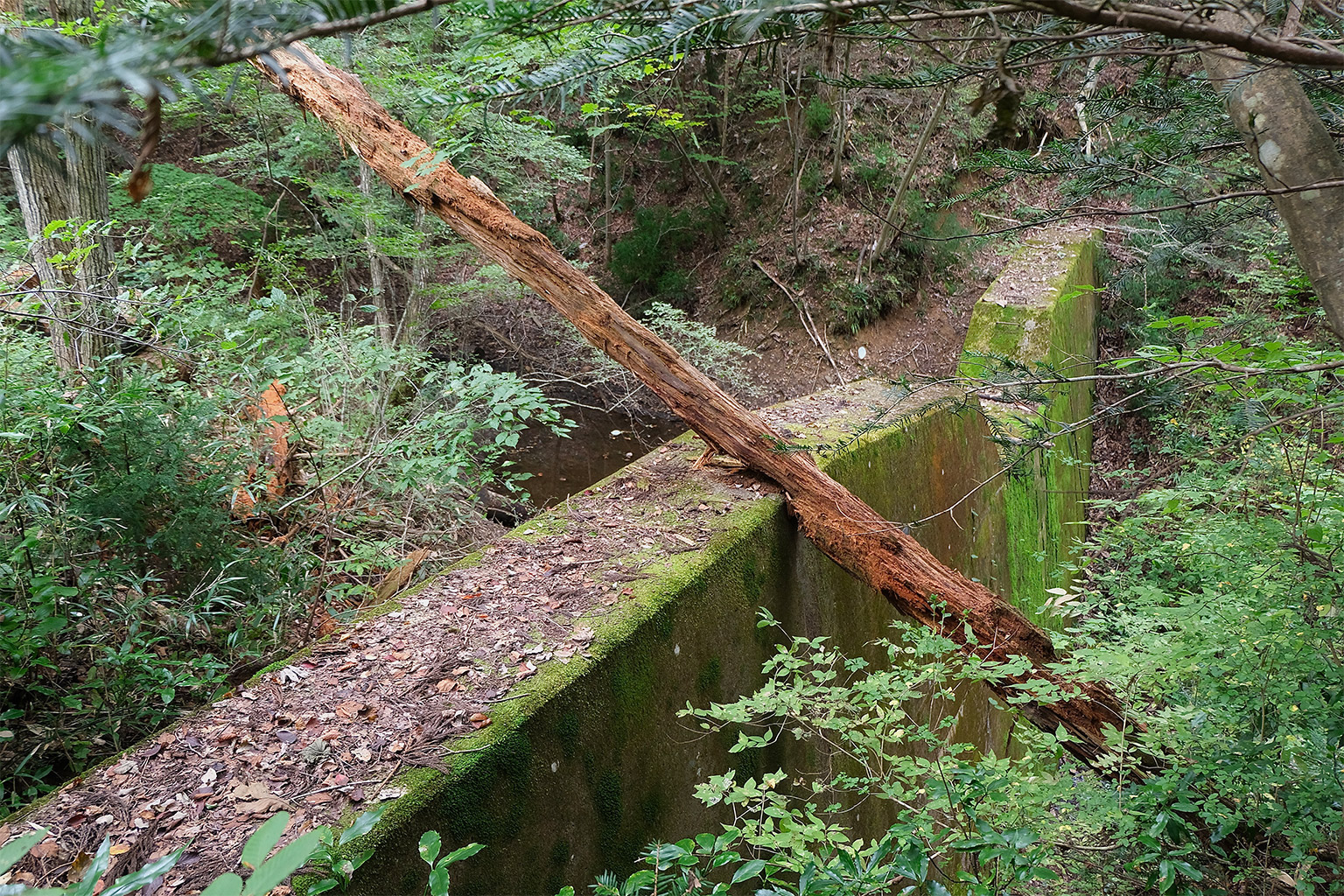
Chisan projects were widely and successfully implemented in Japan following mountain disasters due to severe forest overharvesting during World War II and the subsequent national reconstruction period, and they’ve been a go-to approach to mountain disaster prevention since.
Following the 2017 Kyushu disaster, the Forestry Agency identified more than 1,200 high-risk sites nationwide requiring immediate chisan work, including the installation of dams designed specifically to stop trees carried by landslides. The project had a total budget of roughly 60 billion yen (about $400 million).
But that’s not the end of the story. Although Japanese authorities have decades, even centuries, of experience mitigating mountain disasters, climate change-intensified rains present a new challenge, one demanding a nuanced approach to solutions.
Going forward, “we need to differentiate between surface collapse and bedrock collapse when we consider mountain disasters,” a Forestry Agency representative told Mongabay. “With the increase in torrential rains in recent years due to climate change, we have to adjust a lot of our mindsets.”
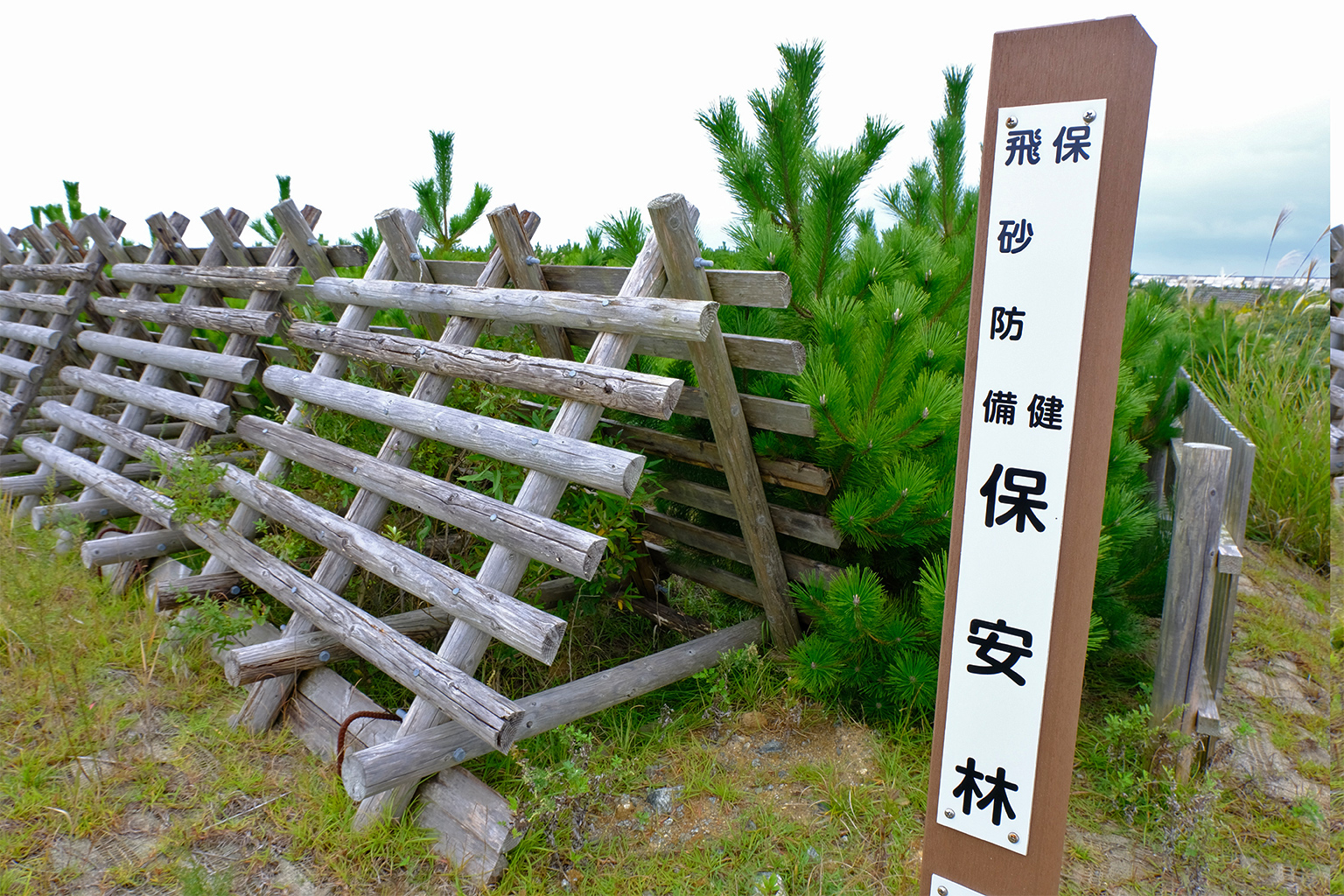
Conifer vs. broadleaf: Complexities and contentious arguments
While bedrock collapse is a serious, emerging problem, mitigating surface collapse — the focus of most forest-based disaster prevention activity up to now — is no easy task.
This is especially true because many of Japan’s plantation forests have degraded due to lack of financial and human resources. In a 2019 paper, scholar Aike P. Rots wrote that “domestic timber has been replaced by cheaper imported timber.” As a result, “Japanese forest plantations were left unmanaged, rural depopulation continued, biodiversity declined significantly, and erosion increased.”
Given these trends, some argue that conifer plantation forests aren’t fit to prevent disasters. “Japan’s mountain forests seem lush and green, but if you actually go inside they are very degraded. And because of that, in this disaster-prone country the conifers just get washed away. Cedar tree roots don’t grow that deep,” explained Ayako Ishimura, director of the nonprofit Association for Fostering a Green Globe (AFG), in an interview with Mongabay.
AFG works to rewild the forests of Mount Tsukuba in Ibaraki prefecture, converting them from conifer plantations into more diverse mixed forests.
“What we citizens are doing — what [forest ecologist Akira] Miyawaki taught us — is that, unlike cedar [and other evergreens], the roots of … broadleaf trees go about twice as deep as their aboveground portion. If we plant those kinds of [broadleaf] trees, they will help reduce disasters,” Ishimura said.

Miyawaki, who passed away in 2021, is the mind behind the globally famous “Miyawaki method” of afforestation. It involves planting various native, broadleaf species in close proximity to each other to create a fast-growing, dense forest. Unlike planted monoculture conifer forests, where all the trees are basically the same height, the Miyawaki method prescribes intentionally planting species that will grow into various levels of canopy and understory.
While the “unnaturalness” of monoculture plantings may make the Miyawaki camp’s argument sound convincing, others say conifer plantations shouldn’t be held accountable for disasters simply because they are conifer plantations.
“We can’t say that all natural forests are good, or all plantation forests are bad,” said Sumio Matsuura, a professor emeritus at Kyoto University and former member of the university’s Disaster Prevention Research Institute. According to Matsuura, root depth — the apparent key to Miyawaki’s conifer vs. broadleaf argument — depends not on tree type, but on a range of factors, including the direction the slope is facing, angle of incline, tree age, and access to water.
Some international experts back Matsuura’s view: “It should be emphasized that for all tree species, the vast majority [90-99%] of roots will occur in the uppermost meter of soil,” concluded a 2005 information note by the U.K.’s Forestry Commission. A 1995 report for the U.K.’s Department of the Environment agreed: “There is no such thing as an intrinsically ‘deep rooted’ or ‘shallow rooted’ tree species … Apparent differences in rooting ability depend on the genetically determined capacity to tolerate difficult soil conditions.”
“A forest’s ability to prevent surface collapse also differs a lot depending on the type of bedrock underneath,” Matsuura said, explaining that bedrock types with discontinuities between the stone provide space for roots to enter and grip. “If the root system has firmly embedded itself into the bedrock, the ability of any kind of tree — whether conifer [plantation] or natural forest — to prevent surface collapse will increase.”

When asked to clarify her comments quoted above, AFG’s Ishimura acknowledged in an email to Mongabay that landslide occurrence isn’t a simple matter, and that soil environments play a large role. She referred Mongabay to Kazue Fujiwara, a professor emerita at Yokohama National University who trained under Miyawaki.
“Because of their needle-like leaves, conifers lose to broad-leaved trees in terms of photosynthesis, so they grow in harsh environments such as watersides, dry areas, rocky areas, and places with shallow soil,” Fujiwara wrote in an email to Mongabay. “In such places, they are resistant to storms. But the cedars in plantation forests, which are planted where there is sufficient good soil, are raised in environments without much competition, so they do not develop strong roots. Therefore, they are vulnerable to storms.”
Fujiwara shared data on root depth of individual trees of various species. She acknowledged that the data did not indicate a difference in depth between conifer and broadleaf species.
But putting aside the root depth debate, forest rewilding projects like those pursued by AFG still perform a vital function by supplanting monoculture forests that will likely never be used for timber. “There is widespread agreement that unused [cedar] plantations should be replaced by more ecologically diverse broad-leaved or mixed forests,” Rots wrote in his paper.

Careful forest management key to curbing disasters
The Forestry Agency team that analyzed the 2017 northern Kyushu rain event — a disaster characterized by large chunks of forest swept away in landslides — reported that geographical conditions, rather than tree species mix or forest management practices, largely determined where landslides occurred. However, they admitted “there were slightly more landslides in areas [where stands] had never been thinned.”
Matsuura elaborated on the importance of thinning: “In plantation forests, very many trees are planted — 2,000 or 3,000 per hectare — and later the forest is thinned, leaving only the good ones [valuable as timber].” But neglected, unthinned plantations end up packed with skinny trees. Thinning not only allows for aboveground growth but gives the remaining trees’ roots room to expand their underground reach, Matsuura said.
To better mitigate disasters, “forests should be composed of trees with broad and deep root systems that have high binding force to the soil,” a representative from the Forestry Agency wrote in an email to Mongabay. Ongoing maintenance is key: “Planting, nurturing, and thinning must be carried out appropriately.”
The 2017 Forestry Agency disaster report contained similar statements, recommending thinning “to promote the development of root systems and understory vegetation.” The report also recommended limiting clear-cutting in areas most at risk of landslides.
Landslide risk in plantation forests increases during the six or so years after a final harvest — which, in Japan, is often a clear-cut — as the root systems of the felled trees begin to rot, but before the roots of the newly planted saplings can mature, according to Matsuura.
The landslide risk posed by steep-slope clear-cutting is one the global forestry industry likely needs to pay close attention to, especially in places like Japan where rainfall patterns are being impacted by climate change: “The intensity, duration, patterns, and total amount of rainfall are rapidly changing,” Matsuura said. “It’s necessary to manage forests with this in mind.”
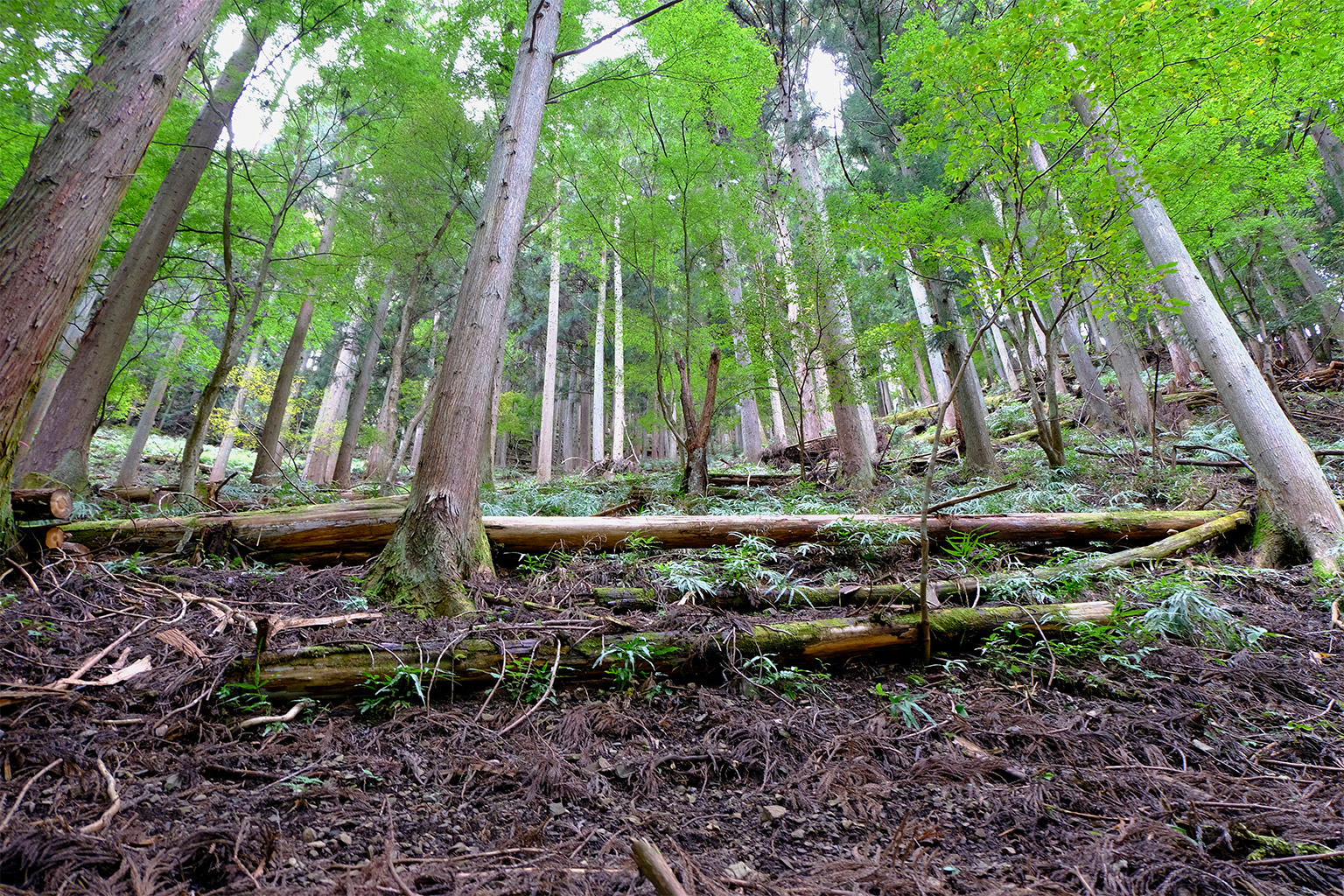
Can forests withstand a tsunami?
Other tree-planting initiatives in Japan aim to mitigate coastal, rather than mountain, disasters. However, due to Miyawaki’s involvement in both, tree roots are once again key to the scheme.
Following Japan’s catastrophic earthquake and tsunami in 2011, which caused more than 15,000 deaths along the Tohoku coast, the foundation Chinju no Mori no Project (Morino Project) began planting stands of broadleaf saplings on raised embankments as protection against future tsunamis. Miyawaki himself was vice president of the Morino Project until his death.
With the help of Miyawaki and foundation president Morihiro Hosokawa, who served as prime minister of Japan from 1993 to 1994, the Tokyo-based Morino Project readily found major corporate sponsors for its tree-planting activities, ranging from Japan Tobacco to the Asahi Shimbun newspaper. The organization also began planting in coastal areas not affected by the 2011 tsunami, including Osaka and Kochi prefectures.
“Black pine and red pine, which have relatively shallow roots compared with evergreen broadleaf trees, were not able to withstand the attack of this gigantic tsunami,” Miyawaki wrote in his 2013 book Gareki wo ikasu mori no bohatei (“Breakwater forests using rubble”) about the Morino Project, arguing in favor of broadleaf coastal protection forests.
“On the other hand, real forests based on species indigenous to the area — such as laurel, beech, and oaks, which have deep roots and tap roots — were able to withstand it. Accordingly, we can effectively reduce the power of natural disasters such as tsunami by building embankments covered with real forests of native tree species along the coastline.”
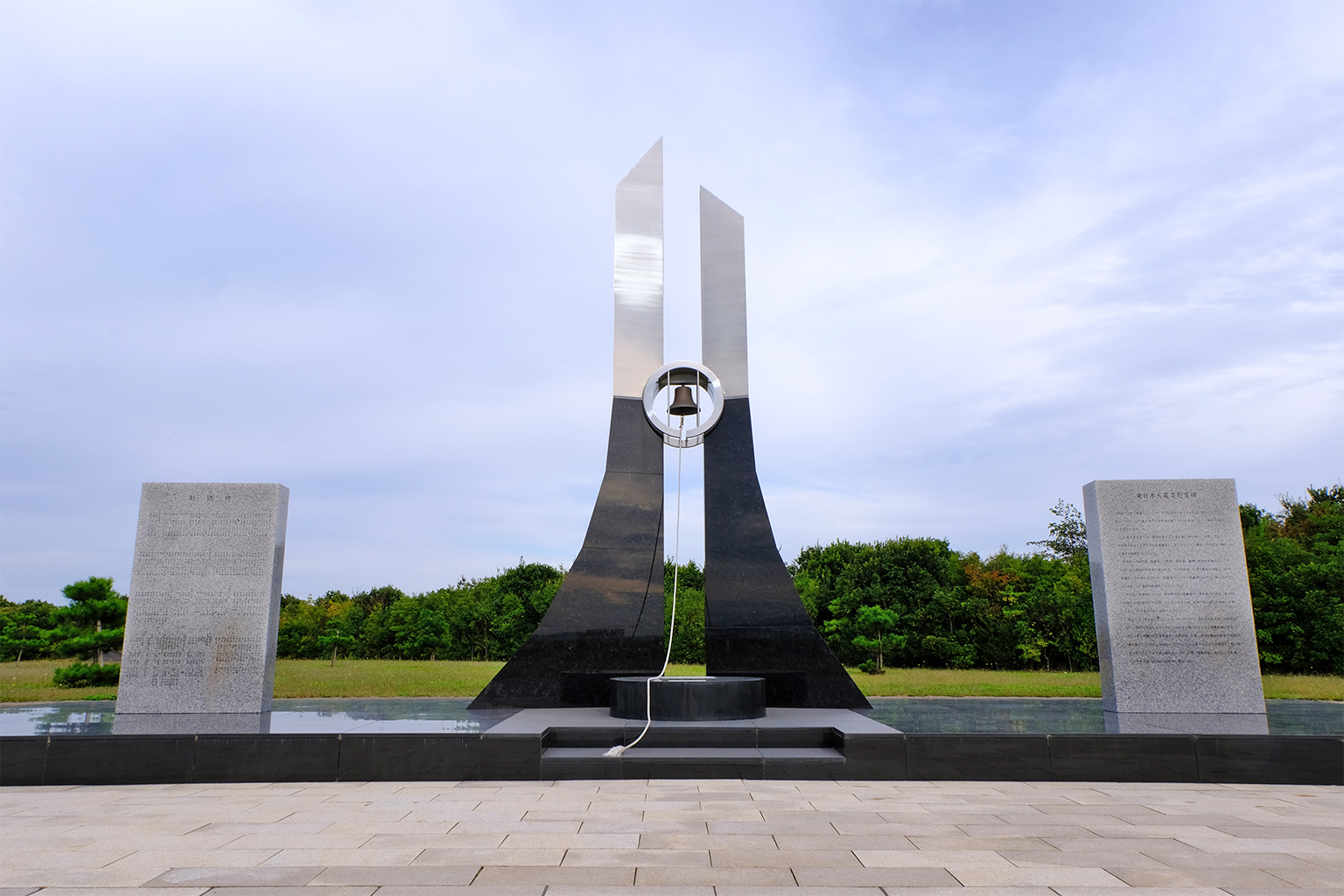
However, Morino Project executive director Makoto Nikkawa offered a somewhat different explanation to Mongabay: “When the groundwater level is high, root growth stops there — that’s why we build these embankments,” he said. “The broadleafs that we’re working with would also be felled [like the pine forests destroyed by the 2011 tsunami] if we planted them on flat ground.”
Nikkawa maintained that Miyawaki’s favored broadleaf species can grow straight roots of up to 6 meters (nearly 20 ft), provided they “don’t run into something” (like groundwater, presumably). “It’s not always straightforward, but we work on ensuring our embankments have good drainage,” he said.
Putting aside the conifer vs. broadleaf question, embankments, whether planted or not, are likely a good coastal flood prevention solution; built levees have stood against floods in the Netherlands and on the U.S. Gulf Coast for many years. Other experts agree that trees alone can’t stand in the way of a 2011-size tsunami.
“In Japan, tsunami [can reach up to] 10 meters [33 ft], so it’s beyond the performance we can expect from the trees” to mitigate their destructive force, said Tohoku University professor Anawat Suppasri. He noted that seawalls need to be deployed in addition to forests.
Tsunamis are yet another disaster potentially exacerbated by the climate crisis. Suppasri, who has modeled how sea level rise will impact tsunamis, found that tsunami run-up height can increase to an even greater degree than the rise in sea level, depending on coastal geography.
Although Japan may, on the surface, appear an ideal case study for how forests can be used to mitigate climate disasters, in reality the country’s experience speaks more to the complexity of the problem. With limited resources for critical forest management — and conflicting views over what certain forest types can or can’t achieve — perhaps the surest way to protect the country from climate disaster is limiting fossil fuel production and greenhouse gas emissions now.

Banner image: New saplings grow on a rotting stump in Mount Kasuga Primeval Forest in Nara prefecture. Image by Annelise Giseburt.
Citations:
Matsushita, K. (2015). Japanese forestation policies during the 20 years following World War II. In Precious Forests — Precious Earth. IntechOpen. doi:10.5772/61268
Rots, A. P. (2019). Trees of tension: Re-making nature in post-disaster Tohoku. Japan Forum, 33(1), 1-24. doi:10.1080/09555803.2019.1628087






